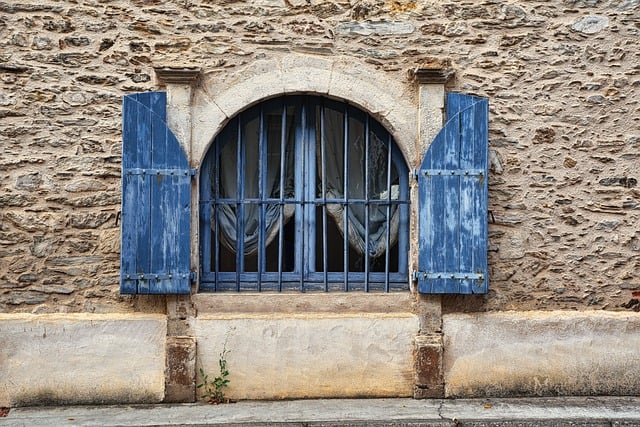Fire-Resistant Door Solutions: A Comprehensive Guide to Safety and Compliance
Fire can spread rapidly, making fire-rated doors a critical component of any building’s safety system. This guide explores the essential aspects of fire-resistant door solutions, from understanding global fire rating standards to choosing the right materials for your specific needs. We delve into the distinct requirements for commercial and residential spaces, highlighting the vital role of certified fire-rated door installation in enhancing structural integrity during a fire event. Whether you’re looking for commercial fireproof doors or custom residential fire safety doors, this comprehensive resource provides insights to ensure optimal protection.
# Fire-Resistant Door Solutions: A Comprehensive Guide to Safety and Compliance
1. Understanding Fire Ratings and Standards
Fire ratings and standards are crucial aspects when considering fireproof doors for both commercial and residential spaces. These ratings, often displayed as a time duration, indicate a door’s ability to withstand fire and provide insulation from its spread. For instance, a door labeled as 90-minute fire-rated means it can resist the passage of fire for up to 90 minutes without failing, giving potential occupants precious extra time to evacuate.
When exploring fire-resistant door solutions, understanding these ratings is key. Certified fire-rated door installation ensures that doors meet specific industry standards, enhancing building safety. Whether looking for standard fireproof doors or custom fire-rated doors, options are available to suit various applications and design preferences while maintaining optimal fire safety.
Explore the various fire rating systems and standards used globally, including international codes and local regulations. Explain how these standards define the performance of doors during a fire event, ensuring readers comprehend the importance of certification.
Fire safety regulations and standards vary globally, but all aim to ensure the safety of occupants during a fire event. These regulations define performance requirements for doors, including their ability to withstand heat transfer, delay fire spread, and provide escape routes. International codes, such as those from the International Code Council (ICC) in the U.S. or similar bodies worldwide, set minimum standards for fire-rated door installation in both commercial and residential buildings. These standards consider factors like material composition, thickness, sealing, and hardware to determine a door’s fire resistance.
Understanding these standards is crucial when selecting or installing fireproof doors, whether it’s for commercial fire-rated doors or custom residential solutions. Certified fire-rated door installations ensure that the chosen products meet specific fire safety requirements. This certification guarantees that the doors will perform as intended during a fire emergency, providing critical time for evacuation and reducing potential damage. Therefore, when considering fire-resistant door solutions, it’s essential to look for products with verified certifications from reputable testing agencies.
2. Commercial Fire-Rated Doors: A Vital Component of Building Safety
Dive into the specific requirements for commercial spaces, highlighting the higher fire resistance needs compared to residential settings. Discuss common applications like high-rise buildings, schools, and hospitals, emphasizing the role of certified fire-rated doors in compartmentalization and delay strategies.
In commercial spaces, fire safety standards demand significantly higher levels of protection compared to residential buildings. This is due to the increased risk posed by larger, more complex structures and the potential for rapid fire spread. Commercial fire-rated doors are designed to meet stringent regulations, ensuring they provide adequate time for evacuation and contain the fire within specific areas. High-rise buildings, for instance, often require doors that can withstand extreme temperatures for extended periods, preventing the progress of flames up the building.
Certified fire-rated door installation plays a vital role in compartmentalization strategies, slowing or stopping fires from spreading across floors or zones. Schools and hospitals, with their high occupant density and critical care environments, rely heavily on these doors. Custom fireproof doors are often specified to match architectural designs while adhering to strict safety standards, ensuring both aesthetic appeal and robust fire protection. Fire-resistant door solutions, including residential options, contribute significantly to a building’s overall fire safety by providing a crucial defense against rapid combustion and smoke intrusion.
In conclusion, understanding the importance of fire-resistant materials in both exterior and interior doors is paramount for ensuring building safety. By adhering to global standards and local regulations, such as international codes, we can implement certified fire-rated door installations that are vital for compartmentalization and delay strategies. Whether for commercial or residential spaces, these solutions not only protect lives but also preserve property, underscoring the critical role of both standard and custom fireproof doors in our built environment.
